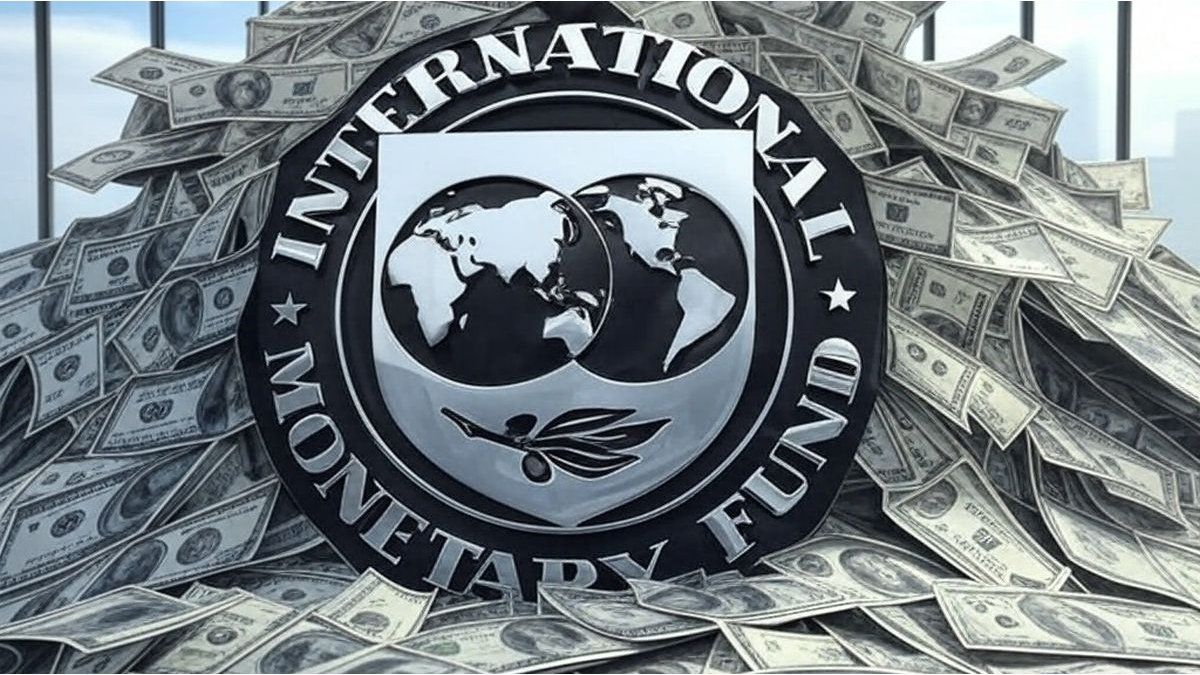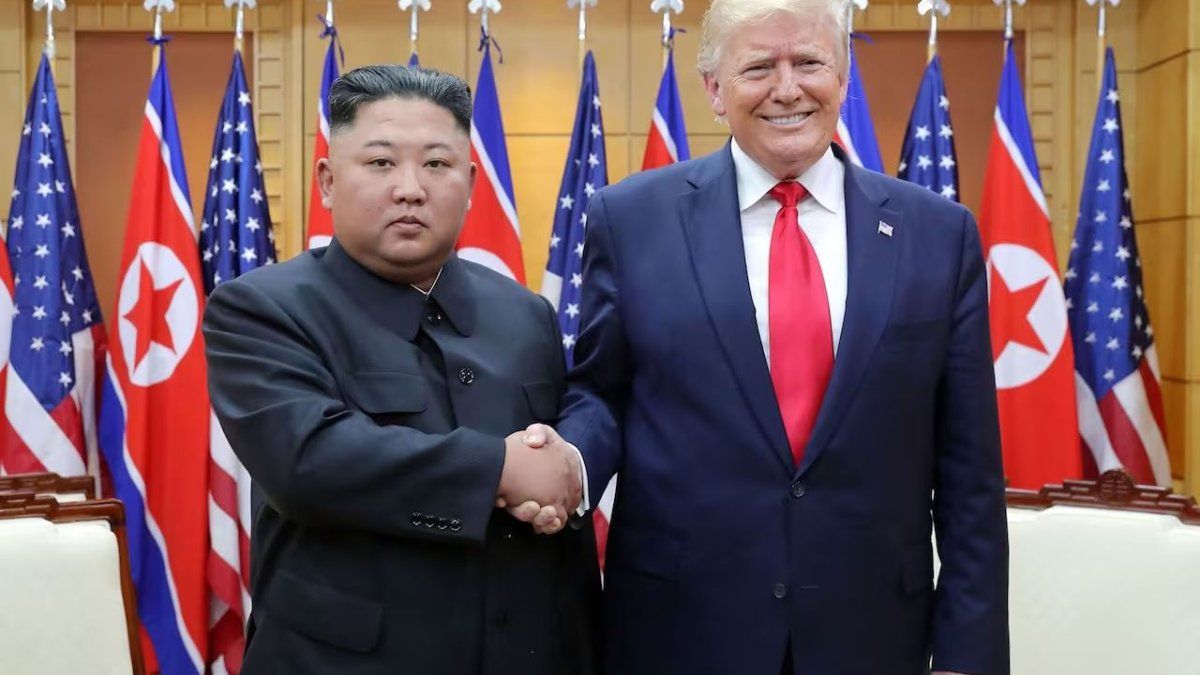This scheme, detailed in the STAFFF REPORT DEL IMFreplaces the rigid “Crawling Peg” with a system, in the theory, more flexible, designed by Washington bureaucrats to recompose reserves, unify the exchange market and, according to the background, “support disinflation.” With a context of negative net reserves (-U $ S7 billion being benevolent) and a persistent exchange gap (25-27%), success will depend on execution and, of course, on a host of more factors, the global context between them. While there are conditions that, of course, are in invisible format, the spirit of what will come can be inferred in the 10 rules that the IMF established for the Central Bank of the Argentine Republic (BCRA) Manage the exchange band.
Establish an initial $ 1,000- $ 1,400 band, which will move
The BCRA implemented an exchange band with a $ 1,000 floor and a $ 1,400 roof, within which the exchange rate can fluctuate freely. This initial range responds to the need to introduce flexibility after a “Crawling PEG” (reduced from 2% to 1% monthly in February 2025) that generated a real appreciation of the peso, affecting the commercial surplus (of US $ 15,000 million in 2024 at lower levels in 2025). The band seeks to reflect the conditions of the official market and, according to the IMF and the Government, “lay the foundations for a transition to a bimonary system” (weight and dollar coexisting) in the medium term. The IMF emphasizes that this measure is a critical step to reduce distortions and align the exchange rate with economic foundations, although its Stability will depend on market confidence.
100 dollars
The dollar, the star of the day.
You have to give rise to the “Price Discovery”
Within the band, the novelty is that the exchange rate will not have an objective level, promoting the “pricing discovery” (Price Discovery) for supply and demand to determine its value. According to Staff Report, this rule seeks to correct the rigidity of the previous regime, which led to an overvaluation of the weight and an exchange gap of 25-27% with the parallel markets in March 2025 (p. 13). By allowing fluctuations, The IMF hopes that the official market gradually converge with parallelsreducing incentives for operations outside the formal system. According to the IMF, this is “crucial” after years of controls that distorted relative prices and eroded competitiveness. The document emphasizes that transparency in price formation will strengthen weight credibility, although He warns that external shocks, such as falls in commodities prices, could generate volatility.
The crawl does not leave: the band moves from today
The band’s limits will be adjusted daily, with the floor ($ 1,000) decreasing and the roof ($ 1,400) increasing, consisting of a monthly 1% crawl. According to the IMF, this mechanism ensures a gradual range of rangewhich could reach $ 950-1,450 in a year, depending on market conditions. The Crawl seeks to maintain the competitiveness of the real exchange rate, avoiding the appreciation observed in 2024 that reduced the commercial surplus and pressed the reserves. With some humor and a touch of cynicism, the IMF emphasizes that “this gradual flexibility minimizes the risk of abrupt devaluations”, which could fire the inflation (projected in 18-23% by the end of 2025). However, According to Staff Report, success will depend on “anchoring expectations through positive real rates” and “a solid fiscal surplus”.
Buy currencies on the floor to protect the band
The BCRA promised to intervene buying all the currencies offered on the $ 1,000 floor to avoid the unlikely situation that the exchange rate falls below the established range. According to the fund, this condition “protects market stability and reinforces the commitment to the accumulation of reserves”, after a fall from US $ 6.4 billion. Purchases on the floor will prioritize exports flows, especially agricultural and energy, which the IMF estimates will reach US $ 35,000 million in 2025, although subject to risks for international prices. The Staff document emphasizes that this intervention is a technical support to sustain the band, but its frequency will depend on the supply pressure of dollars, which could vary with the recovery of domestic demand.
Make “discretionary” purchases within the band to accumulate reservations
Within the band’s range, the BCRA will be able to buy currencies at discretion, focusing on high offer periods, such as seasonal liquidations of agricultural exports (March-June) or mining. According to the fund, this rule is central to reach the goal of accumulation of reserves: US $ 4,000 million in net reserves in 2025, raising the coverage of 47.7% of the Ara metric, with a 100% target by 2030. In 2024, the BCRA accumulated US $ 5,000 million gross, but the net reserves fell due to debt payments and tourism outputs. The IMF expects discretionary purchases to take advantage of direct foreign investment flows (US $ 3,000 million projected in energy and mining) and capital repatrices, although it recognizes that the electoral volatility of 2025 could limit these flows. The accumulation is essential to cover external obligations, they say.
Restrict currency sales to the band’s roof: yes and only if …
The BCRA will only sell currencies if the exchange rate reaches the roof of $ 1,400, prohibiting interventions inside the band. This rule protects reserves after significant losses in 2024, when discretionary sales of US $ 2,000 million in parallel markets aggravated the external position. With gross coverage of only 20% of the Ara metric in March 2025, the IMF prioritizes preserving currencies to meet debt payments and avoid balance balance stresses. According to the agency, sales on the ceiling would be exceptional, aimed at containing extreme devaluation pressures, but the document warns that they will depend on the availability of reserves and may require adjustments in monetary policy to mitigate inflation impacts. The idea is derived from this condition that There will be no support of the IMF for sales that are not at the upper edge of the bandwhich throws doubts about the “flexibility” of the scheme, which could become rigid. This restriction reflects a cautious approach, considering maturities with private bonds from 2026.
Maintain interventions, but they cannot be “sterilized”
Change monetary policy. Currency purchases, both on the floor and discretionary, will be sterilized, increasing the money supply in pesos. This rule aligns exchange interventions with the new monetary framework, focused on the private M2 (excluding paid deposits) and strict limits to the net domestic assets of the BCRA. In 2024, the sterilization of previous purchases generated tensions in the balance of the BCRA, increasing the stock of paid liabilities. The IMF estimates that not sterilized purchases will contribute about $ 2 billion to M2 in 2025, consistent with projected inflation of 18-23%but it requires positive real rates to absorb liquidity and avoid inflationary overflows. Coordination with monetary policy will be crucial, says the IMF, to maintain price stability.
Unify the exchange market eliminating the parallel exports scheme
An Executive Decree (DNU) eliminated the scheme that allowed 20% of exports in the parallel market, ensuring that 100% is channeled to the official market. According to the IMF, this measure, implemented as previous action, seeks to strengthen the supply of foreign exchange in the regulated market, where exports represent 80% of the dollar revenues (US $ 35,000 million projected in 2025). In 2024, the parallel scheme drained US $ 3,000 million of the official market, feeding the exchange gap. The IMF emphasizes that this unification reduces distortions, supports the accumulation of reserves and complements the band by eliminating incentives to operate outside the official range, although the transition could generate resistances in export sectors.
Raise exchange restrictions: the unwritten rule that will apply to companies
The BCRA eliminated critical restrictions to integrate the exchange market, including the limit of US $ 200 per month for currency purchases by individualsdelays in import payments (from 30 days to zero for final goods and services), cross restrictions for importers operating in parallel markets and limits to corporate dividends payments since 2025. According to the IMF, these actions, effective since April 2025, seek to facilitate access to foreign exchange, Reduce demand in parallel markets and align the official market with the needs of an open economy. However, 30% retentions are maintained in card and tourism consumption abroad, and corporate debt payments prior to 2025 will be settled by BCRA dollars in dollars. The IMF estimates that these measures will release US $ 1.5 billion in annual flows to the official market, but its impact will depend on the confidence in the band.
Coordinate with monetary and fiscal policies: if it does not work, the band is emphasized
The handling of the band must be integrated with a robust monetary framework, based on private M2 goals and positive real rates, and a fiscal policy anchored in a primary surplus of 1.3% of GDP in 2025, climbing to 2.5% in the medium term. This coordination seeks to anchor expectations, sustain the demand for weights and achieve inflation of 18-23% in 2025, says the IMF, with a digit by 2027. The fund warns that global risks, such as commercial tensions that reduce commodities prices, or domestic, such as the electoral volatility of 2025 and a poverty of 38%, they could press the band and require adjustments. Contingency plans include possible temporary restrictions or recalibrations of the bandbut the document emphasizes fiscal discipline (1.8% surplus of GDP in 2024) and monetary as shields to protect the stability of the exchange regime.
Source: Ambito




